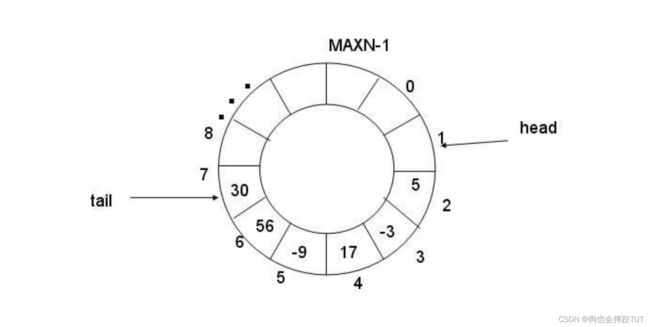【Linux】多线程(二)

文章目录
- 生产者消费者模型
- 为何要使用生产者消费者模型
- 生产者消费者模型优点
- 基于BlockingQueue的生产者消费者模型
- 条件变量
- 条件变量代码
- POSIX信号量
- 基于环形队列的生产消费模型
生产者消费者模型
为何要使用生产者消费者模型
生产者消费者模式就是通过一个容器来解决生产者和消费者的强耦合问题。生产者和消费者彼此之间不直接通讯,而通过阻塞队列来进行通讯,所以生产者生产完数据之后不用等待消费者处理,直接扔给阻塞队列,消费者不找生产者要数据,而是直接从阻塞队列里取,阻塞队列就相当于一个缓冲区,平衡了生产者和消费者的处理能力。这个阻塞队列就是用来给生产者和消费者解耦的。
生产者消费者模型优点
- 解耦
- 支持并发
- 支持忙闲不均
基于BlockingQueue的生产者消费者模型
在多线程编程中阻塞队列(Blocking Queue)是一种常用于实现生产者和消费者模型的数据结构。其与普通的队列区别在于,当队列为空时,从队列获取元素的操作将会被阻塞,直到队列中被放入了元素;当队列满时,往队列里存放元素的操作也会被阻塞,直到有元素被从队列中取出(以上的操作都是基于不同的线程来说的,线程在对阻塞队列进程操作时会被阻塞)
条件变量
#include 条件变量代码
main.cc
#includeblockQueue.hpp
#pragma once
#include task.hpp
#pragma once
#include POSIX信号量
POSIX信号量和SystemV信号量作用相同,都是用于同步操作,达到无冲突的访问共享资源目的。 但POSIX可以用于线程间同步。
初始化信号量
#include 销毁信号量
int sem_destroy(sem_t *sem);
等待信号量
功能:等待信号量,会将信号量的值减1
int sem_wait(sem_t *sem); //P()
发布信号量
功能:发布信号量,表示资源使用完毕,可以归还资源了。将信号量值加1。
int sem_post(sem_t *sem);//V()
上一节生产者-消费者的例子是基于queue的,其空间可以动态分配,现在基于固定大小的环形队列重写这个程序
(POSIX信号量)
基于环形队列的生产消费模型
环形队列采用数组模拟,用模运算来模拟环状特性
环形结构起始状态和结束状态都是一样的,不好判断为空或者为满,所以可以通过加计数器或者标记位来
判断满或者空。另外也可以预留一个空的位置,作为满的状态
但是我们现在有信号量这个计数器,就很简单的进行多线程间的同步过程
RingQueue.hpp
#pragma once
#include Task.hpp
#pragma once
#include Main.cc
#include "RingQueue.hpp"
#include "Task.hpp"
#include 什么时候用锁,什么时候用sem?你对应的临界资源,是否被整体使用!
在上面写过阻塞队列的代码可以发现他是一个整体,而环型队列是将他自己打散了,通过下标去访问。
在阻塞队列当中可以发现消费者和生产者是不能并发的,而环形队列就是可以的,因为他将每一个下标当作一个整体也。所以消费者和生产者就是可以并发的互不影响。



